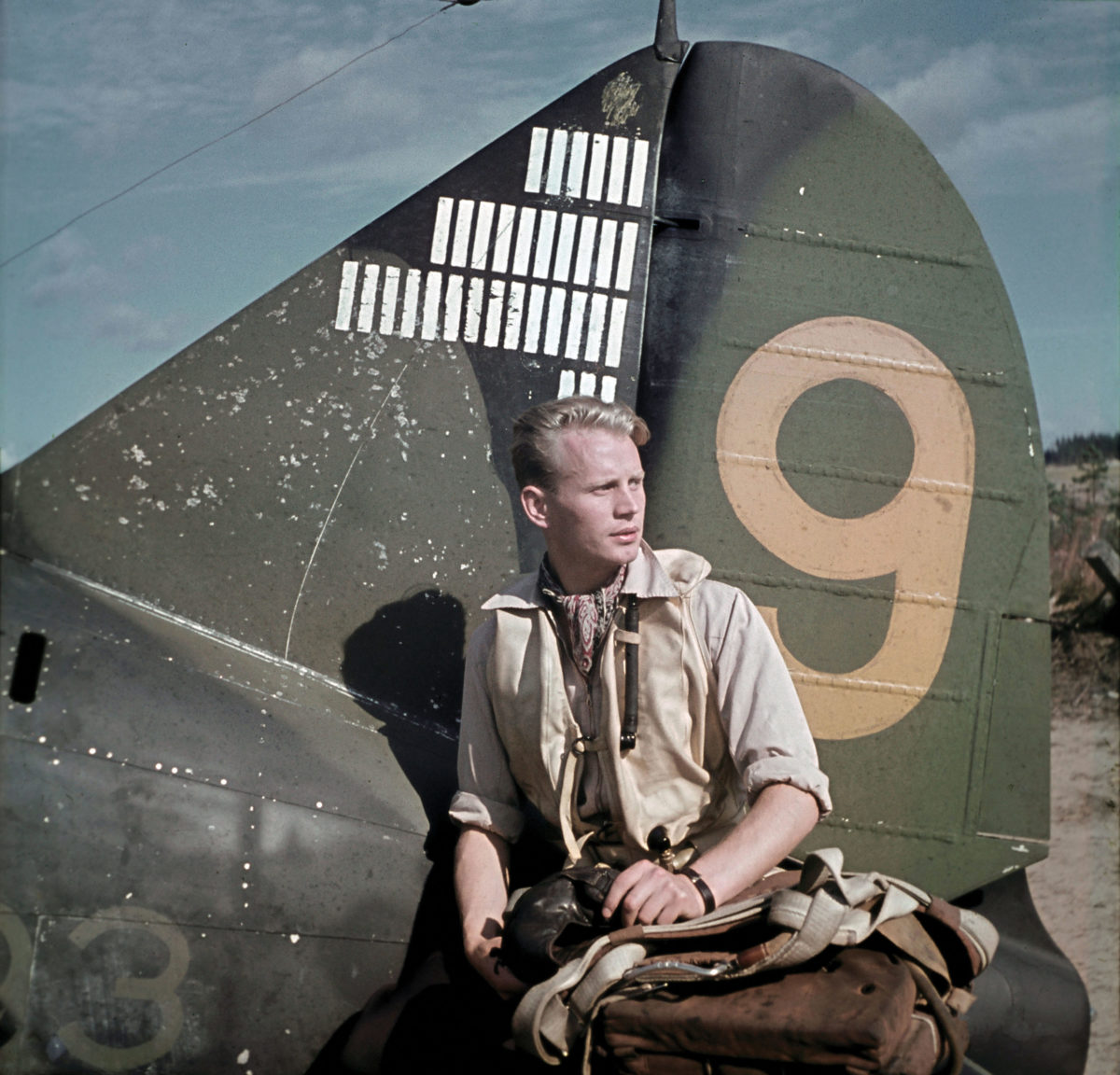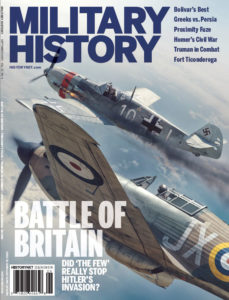During World War II the Finnish variant of the U.S.-built Brewster Buffalo proved more than a match for top Soviet, German and British fighters
It was an incongruous scene. On a June day in 1942 a few stubby, blunt-nosed U.S.-built fighters bearing swastika markings climbed eastward to intercept British-built fighters bearing red Russian stars. Meanwhile that month on the opposite side of the planet the same American-made fighters suffered a disastrous encounter with the Imperial Japanese Navy near Midway Atoll.
The barrel-shaped American-made fighter was the Brewster Buffalo. Both the Finns and the U.S. Marine Corps flew the type—though with vastly different outcomes. Near Midway the Marine squadron VMF-221 lost 13 out of 20 Buffalo, while the Finns typically outshot their Soviet enemies by orders of magnitude.
To explain the difference requires strategic and tactical context.
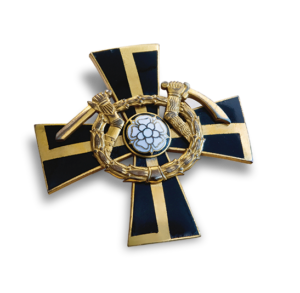
The geography of Finland, which shares borders with Sweden and Russia, shaped its potential for conflict. Neutral Sweden had not fought a war since 1814, when Norway secured its independence. But Finland and its antecedents had waged war against Russia about a dozen times, mostly in the tsarist era through the early 19th century. During the worst weather many Finnish soldiers sat back to enjoy vodka.
In August 1939 the Soviet Union and Nazi Germany stunned the world by signing a nonaggression pact. Three months later Russia, coveting the Karelian Isthmus north of Leningrad (present-day St. Petersburg), attacked Finland. The Winter War, as the subsequent conflict was called, lasted until the spring of 1940 when Helsinki agreed to Moscow’s demands, ceding 11 percent of Finnish territory.
In that period the Finnish air force, the Ilmavoimat, was tiny. Excluding training and liaison machines, its combat strength varied from 110 to 166 aircraft. The inventory represented a smorgasbord of types from Britain, France, Holland and Italy, among others. Standardization was an obvious goal, but not easily achieved.
Meanwhile, World War II erupted in September 1939 as panzer armies swept across Europe. In April 1940 the Germans attacked Norway. As Finland was officially neutral, Helsinki allowed Wehrmacht forces to cross its territory en route to Norway. When Germany invaded Russia in June 1941, Helsinki and Berlin became de facto allies, although Finland never joined the Axis. At that point the United States cut off aid to Finland, including replacement aircraft and parts.
Man for man the Finns were among the world’s finest fighter pilots. Necessarily small, the Ilmavoimat sought to produce world-class aviators to oppose the nation’s most likely enemy—Russia. Toward that end, during the 1930s the Finns sent senior airmen to foreign nations to gather information on fighter aviation.
The “father of Finnish fighter tactics” was then Capt. Gustaf Erik “Eka” Magnusson. He sought exchange tours in France and Germany during the 1930s and tested a variety of European fighters, leading to Finland’s adoption of Holland’s Fokker D.XXI fixed landing gear monoplane.
With Lt. Col. Richard Lorentz, Magnusson adapted lessons learned from France and Germany and applied them to Finland’s nascent fighter arm. The result was spectacular success in combat. As leader of Lentolaivue (LeLv) 24, Magnusson produced the most effective fighter squadron in his air force. During the 1941–44 Continuation War, flying Brewsters and Messerschmitt Me 109s, LeLv 24 claimed 781 aerial victories against 33 losses—a ratio of nearly 24-to-1.
The Finns recognized the benefit of more flexible formations, using the later world-standard four-plane flight ahead of the Luftwaffe. The optimum fighter flight comprised two four-plane divisions, each with two sections of leader and wingman, sometimes staggered in altitude. Rather than the 30- to 45-degree “pursuit curve” flown by nearly every air arm, the Finns joined the U.S. Navy in training wide-angle shooting, out to 90 degrees. The ability to hit at full deflection became a force multiplier for the inevitably outnumbered Finns.
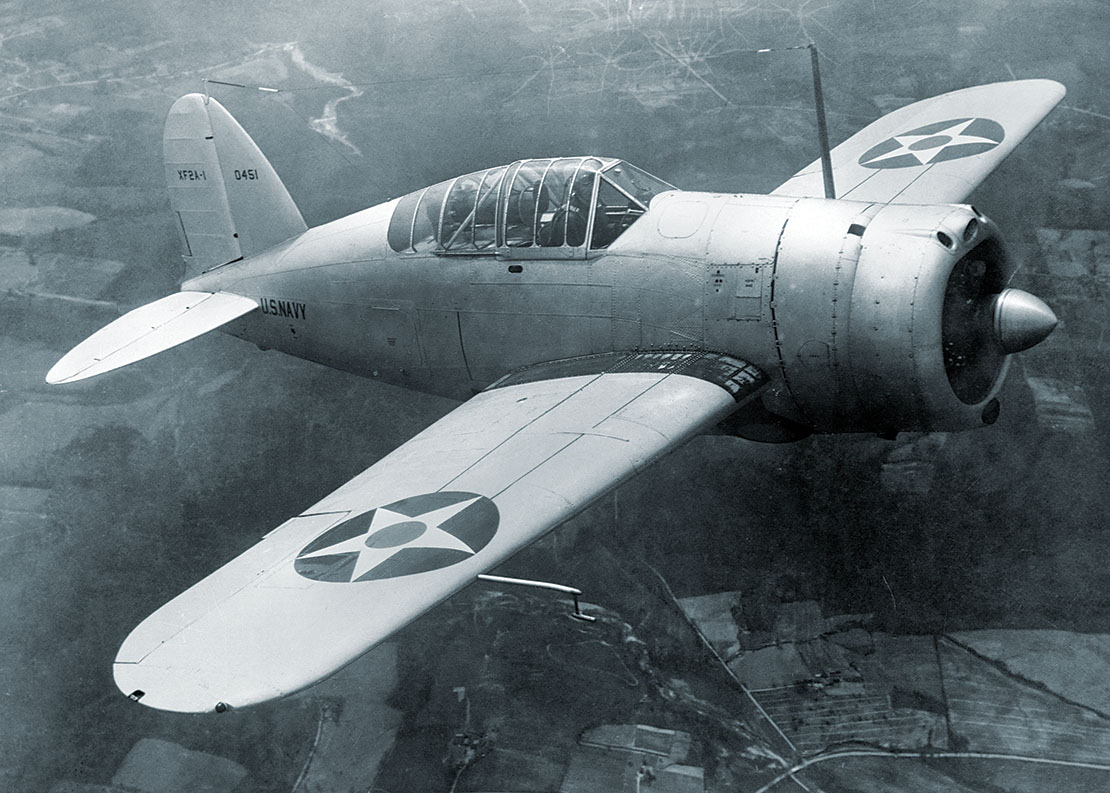
Whatever the normal exaggeration attending a unit’s score, the vastly lopsided results spoke volumes. Magnusson led from the front. When he departed LeLv 24 in 1943 to command a flight regiment, he had 5.5 personal kills, leading a roster that included Finland’s top In the lead-up to war the Finnish government considered three American aircraft with which to upgrade its fighter arm, each an all-metal monoplane with retractable landing gear and an enclosed cockpit, including the Grumman F4F and Seversky EP-1, an export version of the P-35. Since the Grumman types were not yet available, and the EP-1s went to Sweden, Helsinki focused on Brewster’s new naval fighter, the F2A-1. As Finland was not yet at war, the administration of President Franklin D. Roosevelt declared the F2As “surplus,” and Helsinki received 44 before an embargo took effect.
Brewster Aeronautical Corp. was a descendant of Brewster & Co. of Long Island, N.Y., founded in 1810 as a carriage maker and later producing luxury automobile bodies and airplane parts. In the mid-1930s to early ’40s Brewster Aeronautical had limited success with its SBN scout bomber for the U.S. Navy and SB2A/A-34 dive bomber for multiple services, though neither saw combat.
The Navy had already entered the monoplane age with the Douglas TBD Devastator and Vought SB2U Vindicator dive bombers, both of which were aboard carrier decks in 1937. A monoplane fighter was bound to follow, and it arrived on two tracks: Brewster’s F2A-1 (tentatively the Twister, later Buffalo) and Grumman’s F4F-3 (tentatively Comet, later Wildcat). The Brewster, a major leap from Grumman’s F2F and F3F biplane fighters, entered fleet service in 1939. With hydraulically operated landing gear, the F2A was well ahead of its Grumman counterparts’ hand-cranked wheels. The F2A also boasted a spacious cockpit with a large “greenhouse” canopy to afford pilots better visibility than in most contemporaries.
The prototype XF2A-1, powered by a Wright R-1820 Cyclone nine-cylinder radial engine, first flew in December 1937. A typical early order of 54 production F2A-1s ensued with fewer than a dozen delivered to the carrier USS Saratoga. The Roosevelt administration, sympathetic to Finland during the 1939 Winter War, diverted 44 of the Brewsters to the Ilmavoimat, though the first six arrived too late for combat. Though tiny Finland humiliated the Soviet Union in its expansionist land grab, inflicting about four times as many casualties on the Russians, weight of numbers told. In March 1940, after three months of fighting, the nations signed their settlement. Brewster made up its production deficit by delivering most of the improved F2A-2s to the U.S. Navy that summer.
Other nations receiving Buffalo were Britain (Royal Navy, Royal Air Force), Australia (Royal Australian Air Force) and the Netherlands. In 1941–42 the RAF and RAAF flew against Japan in Singapore, Burma and Malaya, while the Dutch East Indies air force defended Borneo and Java before the Japanese overwhelmed them.
Designated Model 239s, the Finnish Brewsters were very similar to the Navy’s F2A-1 with Wright Cyclones. Despite the type’s dreadful onetime combat in U.S. service, pilots of several nations enjoyed flying it, as it was reasonably fast for the era (300 mph) and had responsive controls. Finns nicknamed it Taivaan Helmi (roughly the “Sky Pearl”).
Researchers with Britain’s Royal Aircraft Establishment at Farnborough Airfield evaluated a Brewster in 1940 and found it far better than the Buffalo’s subsequent reputation. “The elevator control is not too sensitive as on the Spitfire or too sloppy as on the Hurricane,” evaluators wrote. “When airborne it increases speed quite rapidly and has a good initial rate of climb.” Approach to landing was flown at 90 to 95 mph with an “excellent” forward view. Most pilots tended to flatten the glide angle slightly higher than normal, “but the aeroplane settles down after a small float with no bounce, bucket or swing.”
The evaluators were especially enthused about the Brewster’s metal ailerons. “They are crisp and powerful, and the stick forces are not too light at low speeds nor too heavy at greater speeds,” they wrote. “The pilots considered them to be a very definite improvement on the Hurricane and Spitfire fabric-covered ailerons.”
Minus military equipment (guns, sights, etc.), the Brewster deal with Finland was concluded in December 1939 at an average price of $54,000 per aircraft with 950 hp Wright R-1820 radials. After stateside acceptance tests on three 239s, the first of the remaining 41 were sent to Sweden, arriving through March, the month the Winter War ended. It was initially armed with three Finn-built Colt MG 53-2 .50-caliber machine guns and one MG-40 .30-caliber light machine gun, later upgraded to four .50s.
Additional assets included a reflector gunsight and armored seats. At the time many fighters employed World War I–type telescopic sights with limited fields of view, or metal ring and bead sights. Recognizing the advantage of wide-angle gunnery, the Finns produced a German-type reflector sight.
“A major factor for good shooting results…was that every pilot was taught [by 1939] to hold their fire until within 50 meters of the target,” Finnish historian Kari Stenman wrote. “After the Winter War experiences more emphasis was put on shooting skills, with known results.
“Every fighter pilot course had two gunnery camps—one for fixed targets, and one in the air. Then all newcomers in the squadron were put as a wingman of a veteran for a number of missions until the veteran ‘released’ the pilot for normal duties.”
The Finnish Brewsters operated in an oppressive climate. Roughly a quarter of Finland lies north of the Arctic Circle. Far to the south, the capital of Helsinki averages a high temperature of 48 degrees Fahrenheit with an average low of 37. Five months average below freezing, while three months (December through February) experience highs in that range.
Seizing an opportunity to regain lost territory, Finland partnered with Nazi Germany in 1941 in the Continuation War. The Ilmavoimat owned about 235 aircraft at that point, with fewer than 200 considered operational.
With about 116 fighters (34 Brewsters, 26 Fiats, 27 Moranes and 30 Fokkers) against nearly 500 Soviet aircraft on the Finnish front, the Ilmavoimat was spread thin from the first day, June 25, when the Soviets bombed several Finnish airfields and cities.
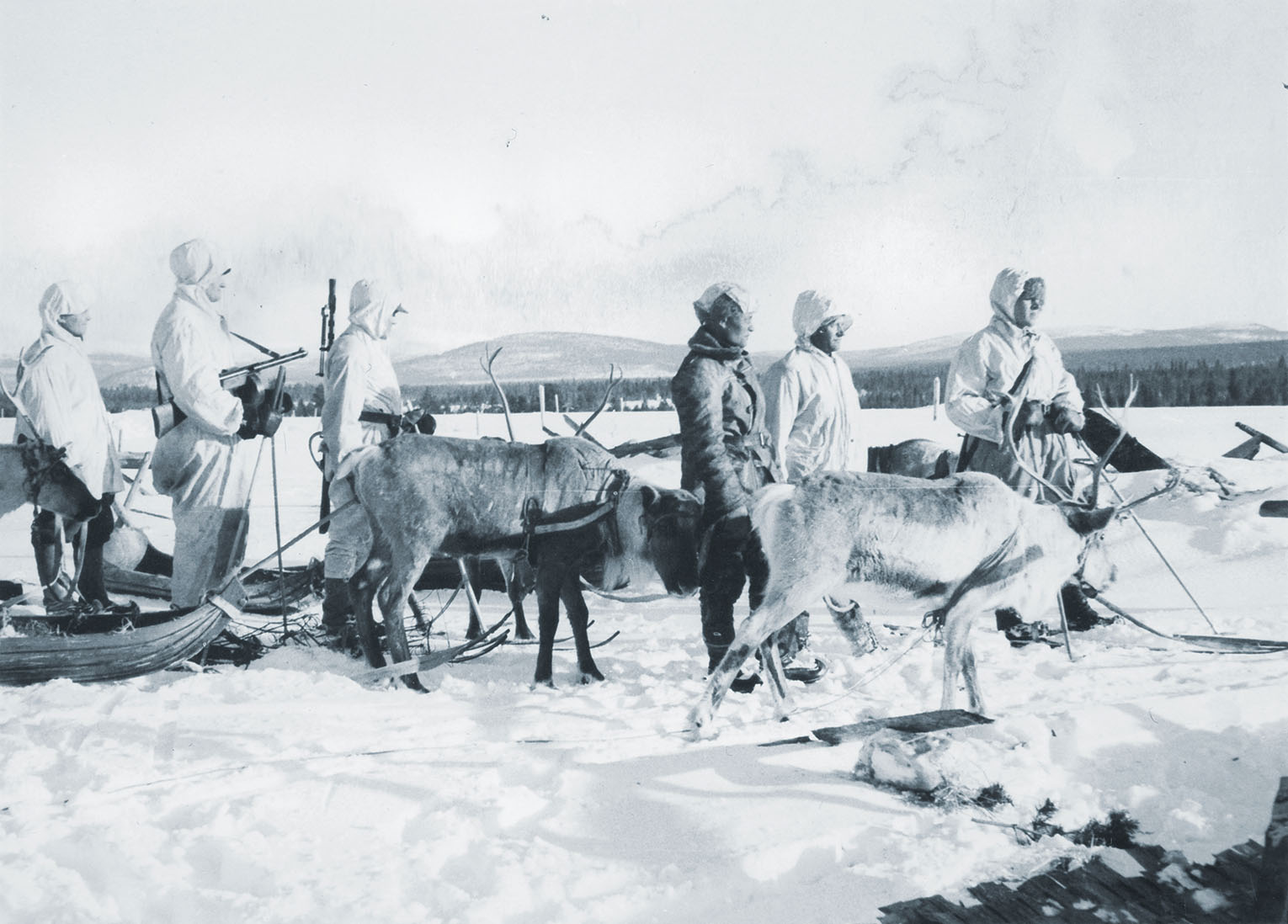
LeLv 24 engaged repeatedly that day, claiming 10 kills without a loss. In the first combat two pilots tackled 27 Tupolev SB bombers below 5,000 feet only five minutes from base. Staff Sgt. Eero Kinnunen and Cpl. Heimo Lampi made repeated passes, claiming five kills between them, evenly divided. “I gave chase, and the enemy suddenly closed, forcing me to pull up alongside him,” Lampi wrote in his after-action report. “At this point the rear gunner hit me from very close range. I pulled up and banked again behind the bomber, firing a short burst into it which created a fire on its right side. It subsequently hit the water burning. I saw Staff Sgt. Kinnunen also down two aircraft.” By month’s end the tally board showed seven more victories with one loss in an accident.
In the first seven months of the war three Finnish pilots—Warrant Officer Juutilainen and Sgt. Maj. Lauri Nissinen of LeLv 24 and Sgt. Maj. Oiva Tuominen, a Fiat ace of LeLv 26—tied for top honors with 13 victories each. By year’s end LeLv 24 was credited with 135 Soviet planes downed vs. two losses, one to combat.
Between combat flights three of LeLv 24’s Brewster aces acquired perhaps the most famous Finnish mascot of the era. In July 1941, at the outset of the Continuation War, 1st Lts. Jorma Karhunen (26.5 Brewster victories) and Pekka Kokko (10) visited Sgt. Maj. Nissinen (22.5), then recovering in a hospital from wounds. A friendly Irish setter named Peggy Brown introduced herself to the fliers, who spoke to the dog’s owner. Rationing made it difficult to feed pets, so the pilots agreed to keep Peggy Brown for the duration. According to squadron legend, she sweated out combat missions listening to her friends’ voices in the base radio room. True to their word, the fliers returned Peggy Brown to her master by year’s end 1944.
Finnish squadrons led nomadic lives, moving once a month or more and dispersing by flights to avoid making easy targets for Soviet bombers. Sometimes they suffered shortages of aviation fuel from Germany. The Finns selected the Brewster in part because of its compatibility with 87-octane aviation gasoline, the European standard until Britain began obtaining 100-octane fuel in 1940.
Continuing combat and attrition steadily eroded LeLv 24’s inventory. By early 1943 just 24 Brewsters remained operational, forcing the transition to Me 109s with other squadrons over the next year.
Finnish fighters’ priority targets were twin-engined Tupolev SB-2 and Ilyushin DB-3 bombers, given their potential to destroy or damage key targets. But more often Brewster pilots met up with Soviet fighters. The top three Sky Pearl pilots—1st Lt. Wind (with 39 victories in a Brewster), Warrant Officer Juutilainen (34), and 1st Lt. Jorma Karhunen (26.5)—claimed 23 Polikarpov I-16 monoplane fighters, 18 Polikarpov I-153 biplanes and 11 Hawker Hurricanes. Encounters with more modern Russian fighters—Yaks, MiGs and LaGGs—were rare until the Finns began the conversion to Messerschmitts in early 1943.
By the June 1941 outset of the Continuation War Juutilainen was a 27-year-old veteran of the Winter War who’d scored three kills flying the Fokker D.XXI. Flying against the Soviets with LeLv 24, he was constantly in combat, thrice claiming triple kills in a day on his way to the top of Finland’s ace roster.
Transitioned to Brewsters, Juutilainen called the 239s “fat hustlers, just like bees. They had speed, agility and good weaponry, too.…We were happy to take them anywhere to take on any opponent.”
Juutilainen described his combat experiences in the memoir Double Fighter Knight, referring to his two Mannerheim Crosses. He pressed attacks to minimum range to ensure lethal accuracy. Juutilainen recalled one particularly close-quarters dogfight with a Soviet Hurricane:
I came in at high speed from above and behind and pulled the throttle back to idle. The target grew in my gunsight. It was a very clean airplane and looked brand new. Now I was approaching the perfect firing range and looked around me one more time. No other enemies were in sight. The pipper on my sight was just slightly in front of the nose of the Hurricane, and my glide angle was about 10 degrees. Now I could count rivets on the target.
In contrast to such salty veterans as Juutilainen and 32-year-old Maj. Eino Luukkanen (56 victories), Wind began the Continuation War as a 21-year-old lieutenant. He found his shooting eye early, achieving ace status in six scoring encounters.
Lacking external supplies, the Finns waged a constant battle to keep their Brewsters operational. Therefore, the Ilmavoimat’s innovative, industrious mechanics and engineers worked hard to provide spare parts, and during their frequent moves to staging bases crew chiefs rode in their assigned plane’s baggage compartment.
From 1941 to ’44 LeLv 24 Brewsters claimed 477 victories for the loss of 19 in combat and six more in accidents or destroyed on the ground. Many have claimed that at 25-to-1 Finnish Brewsters recorded the highest victory-loss ratio of the war, but in fact that title belonged to the Grumman/Eastern FM-2 version of the F4F. Flying from escort carriers in 1944–45, the “Wilder Wildcat” scored a 32-to-1 record, undoubtedly the highest ratio of the piston era.
Between early 1943 and early ’44 the Finnish air force converted four of its six fighter units to Messerschmitt Me 109Gs, though the surviving Brewsters remained operational through war’s end.
To experienced Brewster pilots the German fighter plane was lacking. Corporal Lampi later recounted his attachment to the Brewster to historian Dan Ford. “The old friend Messerschmitt, who was a real hard fighter, was my next plane after the Brewster, but it totally lacked in humaneness,” Lampi said. “I could not love it the way I loved my friend Brewster. Nor any other plane for that matter.” Lampi made ace in the Brewster and added eight more victories in the 109.
LeLv 24 flew its Pearls until May 1944, when the survivors went to LeLv 26, which claimed 35 victories with the type. The squadron scored the Brewster’s last victory against the Soviets on June 17, 1944, three years almost to the day from the type’s first combat. That September, however, Helsinki’s degraded geostrategic position forced a settlement with Moscow in which Finland was required to expel German forces from its borders. By then the Brewsters were long in the tooth and nearly unsupportable.
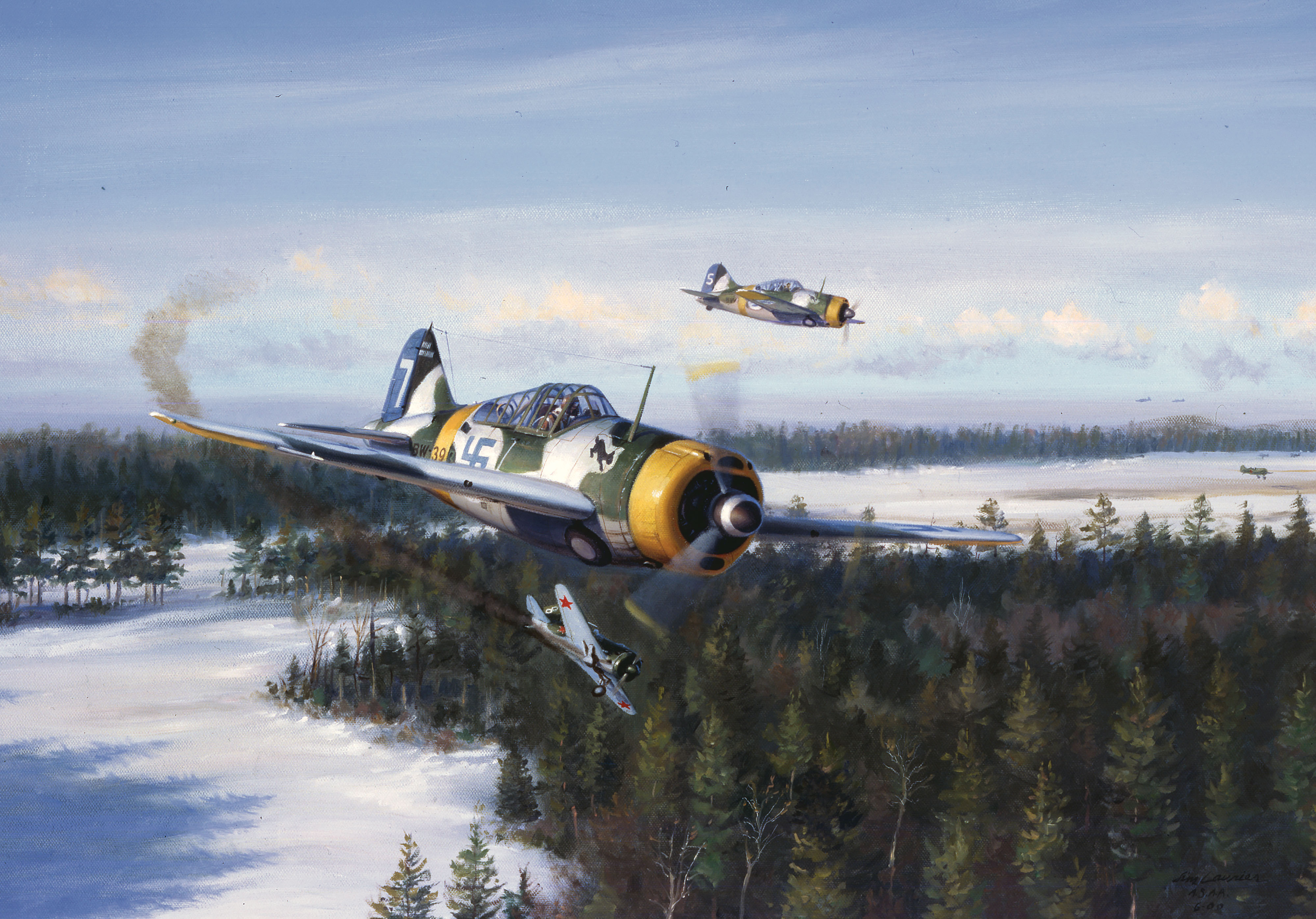
Thus, the Finnish Brewster pilots flew their final missions against the Luftwaffe during the seven-month Lapland War. On October 3 ground controllers vectored LeLv 26 planes to intercept a dozen Junkers Ju 87Ds threatening Finnish shipping in the Gulf of Bothnia. First Lt. Erik Teromaa and Staff Sgt. Olva Hietala each claimed Stukas, ending the Brewster’s participation in World War II. By war’s end only eight Sky Pearls remained. Five kept flying until 1948 and were ultimately scrapped in 1953.
For decades aviation enthusiasts have assumed Finland’s squared-off swastika insignia somehow equated to Nazi Germany’s tilted black emblem. Actually, the Finnish blue swastika on a white background served as its military’s insignia from the nation’s establishment in 1918, whereas the German version of the ancient good luck symbol wasn’t formally adopted until 1935. By war’s end the Finns changed to a blue-and-white roundel.
Wind was the most successful Brewster pilot with 39 victories in type. Juutilainen scored 28 of his 34 Brewster victories in the aircraft coded BW-364. Other pilots added 14.5 more in BW-364, probably making it the champion U.S.-built fighter of all time with 42.5 credited kills.
Thirty-six of Finland’s 96 top fighter pilots became aces in Brewsters, including six of the top 10. For perspective, four Finns scored 20 or more victories in Brewsters, a record only exceeded in U.S. service by five P-47 pilots. Combining victories scored in all aircraft types, Juutilainen finished with 94, Wind with 75 and Luukkanen with 56. Three other Finns ran career totals above 40, only one of whom flew Brewsters.
Today just one Buffalo variant remains. Finland’s BW-372 was damaged by a Soviet Hurricane in 1942 and ditched in a lake near the Russian border. Recovered in 1998, it was purchased by a Florida museum in 2004 before returning to Finland for display in unrestored condition at the Finnish Air Force Museum. MH
Barrett Tillman is a frequent contributor to Historynet publications. For further reading he recommends Finnish Aces of World War II, by Kari Stenman, and Brewster F2A Buffalo and Export Variants, by Richard S. Dann and Steve Ginter.
This article appeared in Military History magazine. For more stories, subscribe and visit us on Facebook:

